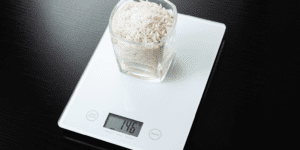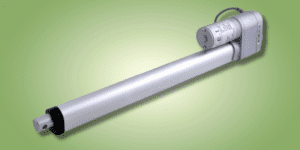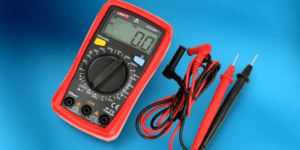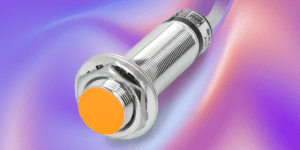Spis treści:
Refrigerator Saboteurs sound like a French pirate crew, at least. Well, it’s a pickle. The real fridge horror is finding our favourite delicacies spoiled. The fridge is not a TV set, there is no need to look in there every fminute and see what has changed. Refrigerator doors not closing is a common problem resulting in various unpleasant consequences.
It is worth protecting against it in a simple way.
The refrigerator does not freeze

Too bad that the device does not perform its primary role which is even included in its name. When the refrigerator door does not close tightly and form a proper seal, cold air escapes the refrigerator and makes way for warm air that enters the compartment. This can cause condensation to build up inside the refrigerator and forces the compressor to work overtime. Water droplets appear, which means visible moisture and a problem with temperature equalization. Repairing the refrigerator door can be as simple as rearranging the items inside, or the gasket may need to be replaced.
Gasket. Cracked, torn, in a word: broken
Tips such as “check if the milk on the door is not in contact with the protruding banana” are omitted. If that’s not the case, the first thing we should do is check the refrigerator door seals. With frequent opening, it can get…well, worn out. It may turn out that the door seals have gaps, cracks or tears – if so, it is most likely that we have to wait for service replacement or self-repair. It is worth checking everything carefully, piece by piece and in a good light.
There’s also a method with a paper: put a piece of paper to the seal and close the refrigerator door. If it falls on the floor or is easily moved, the magnetic seal does not adhere properly and the magnet does not work as it should. In addition, remember that the gasket must be clean – wash it with warm soapy water and a soft cloth. Make sure to clean the folds inside the gasket as well, because that’s where grease, fat and dirt love to get in.
Replacing the gasket in 4 steps:
1. Pull off the refrigerator door.
2. Gently remove the old gasket with a narrow knife.
3. Slightly warm up the new gasket to make it more flexible, which makes it easier to install.
4. Set the new gasket in place using glue or silicone.
Lack of base, or an unlevel refrigerator
If the gasket is in good condition, it’s time to make sure that refrigerator is level from front to back and side to side. It will be useful to use a spirit level (bubble level etc.) and adjust supports located at the bottom. To do this, place the fridge in such a way that it is slightly tilted backwards, which will make it more comfortable to operate at the base. Remember to empty the contents beforehand!
On the loose. Hinges
Sometimes hinges bend over time or their fastenings break off. If this is the case, we need to check that each hinge piece fits properly into its mount – exactly the same way we would check the hinges on a closet or room door. It is a good idea not to put a row of twelve beers on the door – avoid storing heavy items in the door shelves.
Other tips:
- check the temperature setting – the correct one for the refrigerator is between +4°C and +5°C, for the freezer compartment around -18°C (for Polish, these may vary a bit).
- Do not open the door too often.
- Do not open the door for long periods of time.
- Do not put hot food inside.
- If the refrigerator has been unplugged for a while or connected for the first time, wait until the compartment has cooled down and the temperature has stabilised.
Everything works and the refrigerator door is still not closed!
Because you don’t close them! If it’s not a crooked floor (which happens, but not that often, besides, there’s a way around that too, a matter of proper leveling relative to the bottom of the fridge, not the floor), then someone in the house is probably not trying. Perhaps that villain is the figure in the mirror. We won’t always see the glow of light beaming through the crack. Fortunately, we can install an easy fix that will be a foolproof way to make sure we always lock the fridge.
Fridge alarm
This method is to connect to the outside of the refrigerator housing a power source, such as an AA battery or other required, a limit sensor (limit switch) and a buzzer with a generator – preferably not too loud. The plate must be pressed when the fridge is closed. Why not for example a reed switch? Because by default it will beep when closed, and we want the opposite. If the buzzer emits too many decibels, we can muffle the emitted sound for example by taping the hole. This is the easiest way to make your first electronic project at home.
Creating an installation that will trigger the siren later and include other functions like advanced security alarms requires working with an Arduino type controller. This has its advantages – it opens up possibilities such as remote access or connecting to a WiFi module that will send us an alert when the fridge is opened. Good for college roommates who are bushwhacking and circling for snacks as vultures.


How useful was this post?
Click on a star to rate it!
Average rating 0 / 5. Vote count: 0
No votes so far! Be the first to rate this post.





